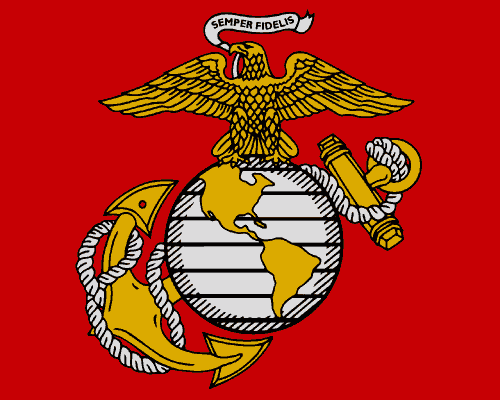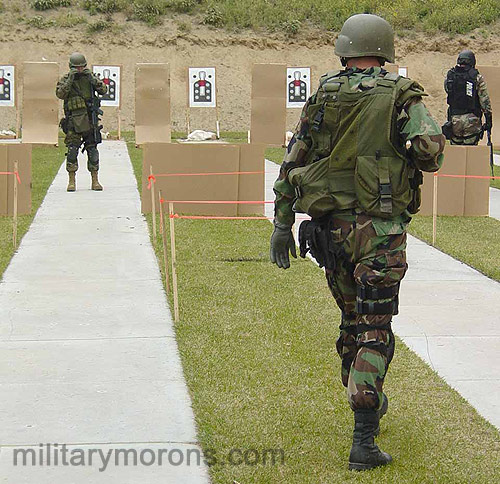 par Invité 07.01.10 14:45
par Invité 07.01.10 14:45
Voila quelques informations supplémentaires sur le CQBE...mais je cherche toujours des photos et d'autres informations sur le body armor de ce kit...
Until April of 2000, the standard black side Load Bearing Vest (LBV)/body armor was the Close Quarter Battle Equipment (CQBE) Assault Vest made by Point Blank. This vest was considered by some to be state of the art when adopted circa 1996, but it was heavy (14 pounds without the ceramic plates, and 28 pounds with) and bulky. Additionally, the carrier, LBV and accessory pockets were made of pack cloth instead of the more durable cordura.
The modular load bearing vest was poorly designed. The stock pad was actually positioned down around the shooters pecs — way too low for practical use. The pouches (and the carrier) tore easily, especially the pockets where the ceramic plates were held. Many vests had copious quantities of that old stand by, riggers tape, vainly trying to hold the mess together. The ceramic plates were fragile, in a very non-fragile environment, and eventually many lost all structural integrity.
The magazine pockets, originally designed for MPS mags, did not hold the M4 mags well. It was a two man endeavor to don, and took a long time to remove.
Some operators choose to privately purchase LBV’s made by Eagle and others in lieu of the deficient CQBE LBV.
In 1996, the CQCE was noted in a Fleet Operational Needs Statement (FONS), citing its deficiencies in the amphibious environment and overall inefficiency for use in general.
In short, the Assault Vest was a disaster, and a replacement was desperately needed. Requests were made for a replacement vest, (another EONS was submitted in mid 1999) but the priority was low. Several people in Marine Corps Systems Command, Natick, and others started work on a system that would replace the CQBE.
On 09 Dec 99 a CH-46E carrying 5th platoon crashed into the Pacific while conducting VBSS off San Diego. Seven were killed, including five from 5th Platoon. Only one of the surviving Marines was able to remove his equipment while trapped in the sinking helo. All of the other survivors swam to the surface with their equipment on — a mighty feat that others of less physical and mental strength might not have been able to do.
The priority to replace the outdated CQCE then became an Urgent Requirement. Fortunately, a very astute Program Officer (and Ranger) Jon Laplume, from the Soldier System Center at Natick, MA, carried the ball. Within 110 days, he (along with 1st Sgt Clark, 2nd Force, GySgt Elder, 5th Force, SSgt Daley, 1St Force, and Capt. Hoffman and others from MARCORSYSCOM) developed a vest, had it produced, and trained and equipped all user units with the Full Spectrum Battle Equipment (FSBE) system.
From : http://www.forcerecon.com/strongmenarmed3.htm
--> Donc il y a d'abord eu l'"Assault Vest" de Point Blank body armor qui faisait partie du Close Quarter Battle Equipment (1996-2000). Et comme il était défectueux il a ensuite été remplacé par le the Full Spectrum Battle Equipment dont le gilet pare-balles est appelé "Amphibious Assault Vest (AAV-FSBE)".
Détails de l'Assault Vest CQBE ;
Manufacturer : Point Blank
Tailles et NSNs du gilet pare-balles (housse) :
* small regular : 8470-01-445-3309
* small long : 8470-01-445-0994
* medium regular : 8470-01-445-0996
* medium long : 8470-01-445-0995
* large regular : 8470-01-445-0992
* large long : 8470-01-445-0998
* X-large regular : 8470-01-445-0993
* X-large long : 8470-01-444-04458
Plus de détails : http://info.publicintelligence.net/CQB%20Equipment.pdf


















